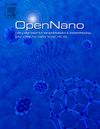Recent advances in lanthanide-based nanoparticle contrast agents for magnetic resonance imaging: Synthesis, characterization, and applications
Q2 Pharmacology, Toxicology and Pharmaceutics
引用次数: 0
Abstract
MRI is a powerful, non-invasive imaging technique with exceptional soft tissue contrast, requiring contrast agents to enhance sensitivity by shortening longitudinal (T1) and transverse (T2) relaxation times. While most clinical agents are chelate-based, their potential toxicity has driven the development of nanoparticle-based alternatives. Nanoparticles offer reduced toxicity, improved stability, prolonged circulation time, and better control over surface properties. Lanthanide-based nanoparticles, in particular, are promising due to their paramagnetic properties enhancing MRI contrast. The design of these nanoparticles focuses on optimizing size, shape, and colloidal stability with advances in synthesis techniques allowing for precise control over particle size, morphology, and stability to significantly influence relaxivity. Larger sizes increase r₂ values but may reduce stability, while anisotropic shapes enhance relaxivity compared to the more stable spheres. Surface modifications with functional polymers improve stability and prevent aggregation, optimizing imaging performance. As research progresses, lanthanide-based nanoparticles are poised to become crucial tools in radiology-driven cancer diagnosis and therapy, offering dual functionality for early detection, targeted treatment, and minimized off-target effects. However, these nanoparticles must be refined for tumour-specific diagnostic and therapeutic applications and undergo comprehensive safety evaluations before clinical trials.
磁共振成像用镧系纳米造影剂的最新进展:合成、表征和应用
MRI是一种强大的非侵入性成像技术,具有特殊的软组织造影剂,需要造影剂通过缩短纵向(T1)和横向(T2)松弛时间来增强灵敏度。虽然大多数临床药物是基于螯合物的,但它们潜在的毒性已经推动了基于纳米粒子的替代品的发展。纳米颗粒具有降低毒性、提高稳定性、延长循环时间和更好地控制表面性质的优点。特别是镧系纳米颗粒,由于其顺磁性能增强MRI对比,因此前景广阔。这些纳米颗粒的设计重点是优化尺寸、形状和胶体稳定性,合成技术的进步允许对颗粒尺寸、形态和稳定性进行精确控制,从而显著影响弛豫。较大的尺寸会增加r₂值,但可能会降低稳定性,而各向异性的形状与更稳定的球体相比,会增强弛豫度。功能聚合物的表面修饰提高了稳定性,防止聚集,优化了成像性能。随着研究的进展,镧系纳米颗粒有望成为放射学驱动的癌症诊断和治疗的关键工具,具有早期发现、靶向治疗和最小化脱靶效应的双重功能。然而,这些纳米颗粒必须经过细化,以用于肿瘤特异性诊断和治疗应用,并在临床试验之前进行全面的安全性评估。
本文章由计算机程序翻译,如有差异,请以英文原文为准。
求助全文
约1分钟内获得全文
求助全文
来源期刊

OpenNano
Medicine-Pharmacology (medical)
CiteScore
4.10
自引率
0.00%
发文量
63
审稿时长
50 days
期刊介绍:
OpenNano is an internationally peer-reviewed and open access journal publishing high-quality review articles and original research papers on the burgeoning area of nanopharmaceutics and nanosized delivery systems for drugs, genes, and imaging agents. The Journal publishes basic, translational and clinical research as well as methodological papers and aims to bring together chemists, biochemists, cell biologists, material scientists, pharmaceutical scientists, pharmacologists, clinicians and all others working in this exciting and challenging area.
 求助内容:
求助内容: 应助结果提醒方式:
应助结果提醒方式:


